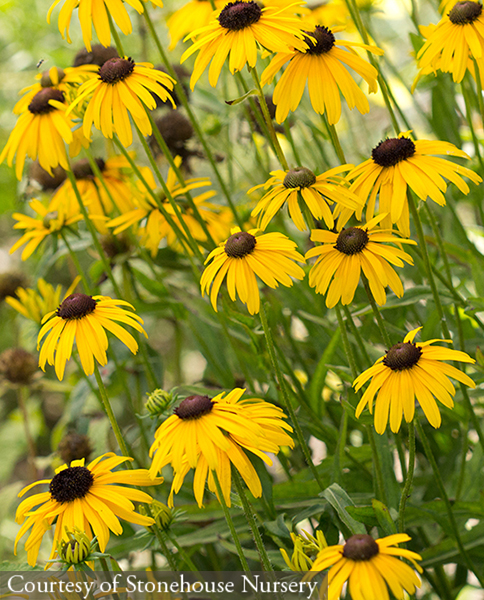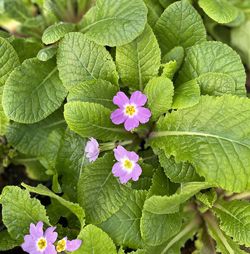
Rudbeckia
Black-Eyed Susan
Named by Linnaeus in honor of his teacher Olaf Rudbeck, this North American genus includes 25 to 30 species, many of them famous summer and late season bloomers. These easily grown selections promise to brighten borders and naturalized meadows plus make dandy additions to bouquets. Offering late fall and winter interest, they combine well with Asters, Eupatoriums and grasses.

Wildly popular for her over-the-top lambent flower-power and enduring compact stature, this disease-proof selection of our native Black-Eyed Susan occurred at Andre Viette’s Virginia farm and was introduced by Blooms of Bressingham. Tidy, lanceolate deep green leaves and short, stocky upright stems lift a boundless sea of buoyant, daisy-style golden-yellow blooms with purplish cocoa-colored disks. Delighting song birds, pollinators and florists, clumping ‘Viette’s Little Suzy’ can be tucked into meadows, perennial borders, cottage gardens or massed to make a flashy statement, while it triumphs over deer, poor dry soil and air pollution.
Blooms July–September
Size: 18" – 2' 0" high x 18" – 2' 0" wide.
Hardy to zone 3.
Please fill out our Registration Form to receive news of updates to the web site, availability of new plants, give us your feedback, and to be on the mailing list to receive future printed catalogs.
Other selections in this genus:
- Rudbeckia ‘American Gold Rush’
- Rudbeckia fulgida var. deamii
- Rudbeckia fulgida speciosa (Newmanii)
- Rudbeckia fulgida ‘Swiss Gold’
- Rudbeckia grandiflora ‘Sundance’
- Rudbeckia laciniata ‘Goldquelle’
- Rudbeckia occidentalis ‘Green Wizard’
- Rudbeckia paniculata
- Rudbeckia subtomentosa
- Rudbeckia subtomentosa ‘Loofahsa Wheaten Gold’
- Rudbeckia triloba ‘Prairie Glow’










